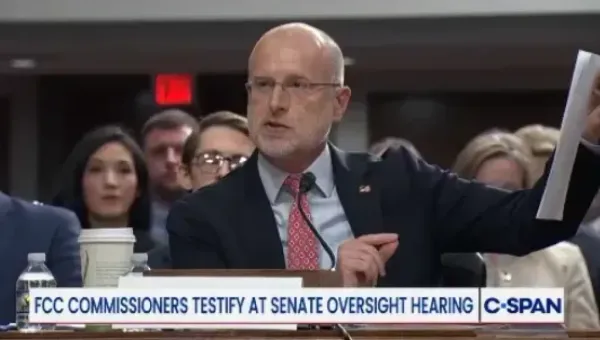FCC Begins Field Tests of 'White Space' Prototypes, Motorola Passes 'Without a Hitch'
ELKRIDGE, MARYLAND, July 16 – The FCC on Wednesday began field testing wireless internet devices that transmit signals over broadcast television frequencies by examining the reliability of prototypes designed by Motorola and Philips Electronics at a state park here.
By William G. Korver, Reporter, BroadbandCensus.com
ELKRIDGE, MARYLAND, July 16 – The Federal Communications Commission on Wednesday began field testing wireless internet devices that transmit signals over broadcast television frequencies by examining the reliability of prototypes designed by Motorola and Philips Electronics at a state park here.
The tests are part of an FCC proceeding to consider allowing low-power internet devices to use vacant television frequencies, or “white spaces.” About 12 sites will be tested over a period of four weeks, according to the FCC. Laboratory tests have already been taken on several of these devices.
On this first day of field testing, Motorola’s device appeared to perform better than did Philips’. The Motorola device took less time to scan for available frequencies, and did not transmit signals over frequencies reserved for other uses.
Both devices were tested twice from two separate locations in the Avalon parking area of the Patapsco Valley State Park here, about three-quarters of the way from Washington to Baltimore.
The measurements were taken in a van in the parking lot. An antennae was placed 30 feet in the air to simulate a residence and to measure television signal strength.
Tests were not taken on devices designed by Adaptrum and I2R on Wednesday because of an FCC error. Those tests will likely be completed on Thursday or Friday. Microsoft’s device was not tested at the request of Microsoft.
Motorola officials expressed satisfaction with these preliminary results.
The testing “went off without a hitch,” according to one Motorola engineer, who refused to identify himself to this reporter.
A second engineer, who also refused to identify himself, said that his prototype’s use of geolocation – in addition to frequency sensing – helped to distinguish itself from the competition.
One of the engineers said that, with an FCC regulation governing design parameters, Motorola would be able to have a working model on the market within eight months.
The Philips device falsely located channel 37 as available white space, an FCC official said. Channel 37 is reserved for radio astronomy and medicial telemetry.
Major technology companies, including Google and Intel, as well as Microsoft, Motorola and Philips, want to make use of the “white spaces” to provide additional spectrum for broadband, or high-speed internet technologies.
Because of the wide spacing between television channels (a product of interference concerns under 1952-era television technology), many broadcast frequencies are unused within a given area.
But these vacant channels differ in different locations. In the Washington area, channels 20 and 26 are occupied by broadcasters, for example. In Baltimore, channels 22 and 32 are occupied. To avoid interfering with television signals, devices need to be able to “sense” their location, either via a global positioning system (GPS) or through radio-frequency analysis, or both.
During the testing, Motorola’s prototype took several minutes to scan for possible “white spaces.” Philips’ device took around 15 minutes.
Because the power was accidentally turned off twice, Adaptrum and I2R will likely complete their tests on Thursday or Friday.








Member discussion